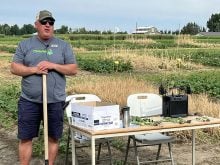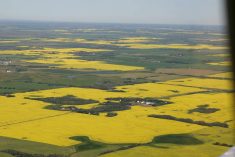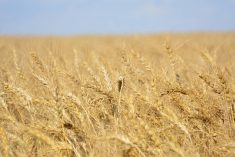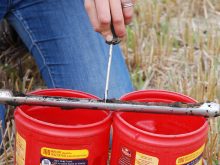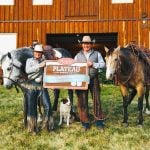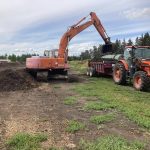Science can reveal new commercial possibilities, but it doesn’t provide
a business plan for a profitable company.
University of Saskatchewan researchers identified a genetic mutation
that signals an animal’s likelihood of producing AAA well-marbled beef.
But that information was published in a scientific journal and is
available to anyone.
Leigh Marquess and his colleagues at Quantum Genetics Inc. wanted to
use the information to build a business, but to do it, they needed a
way to use the information for a process that was exclusive to them.
Read Also

AI expected to make itself felt in food systems
Artificial intelligence is already transforming the food we eat, how farmers produce it and how it reaches the consumer, experts say
The decision was to develop it as a tool that would allow feedlots to
better manage their feeding programs.
Marquess said a beef animal’s growth, through weaning and into
background feeding, builds bone and muscle. At maturity, which is when
most cattle enter feedlots, the animal starts to build fat.
A quick test that identifies animals with the marbling gene gives the
feedlot a new tool.
“We now have an ability to manage the animal in the last phase of its
growth cycle,” Marquess said.
The ability to identify animals with the genetic potential to lay down
fat will give feedlot managers a new way to sort cattle and feed them
the appropriate diet and for the right amount of time to get the
optimum economic return.
“Today, we (feedlots) buy cattle on averages,” Marquess said. “That is
a major flaw, to buy on averages and sell on an individual basis. We
can now say, if we have to sell on an individual basis, let’s feed on
an individual basis, not feed for a pen average.”
This combination of genetic test and feeding program is the basis of
the patent Quantum has applied for.
But if Marquess’s plans play out as he hopes, the implications of the
technology will start to affect the cow-calf and purebred producer,
increasing demand for Quantum’s genetic testing.
“Ultimately, the feedlot will give a pricing signal to the guy raising
the calf and the guy raising the calf will give a pricing signal to the
bull guy.”
The company is working with several Alberta feedlots and continues to
gather data to prove the system works.
Marquess said multinational agribusinesses are interested in buying
Quantum, but he wants to keep control of the process.
“We had several offers, but I actually believe in it enough that we
haven’t bit on anything.”
While he expects to have a partner someday, he wants the technology
priced to be accessible to the average producer.





